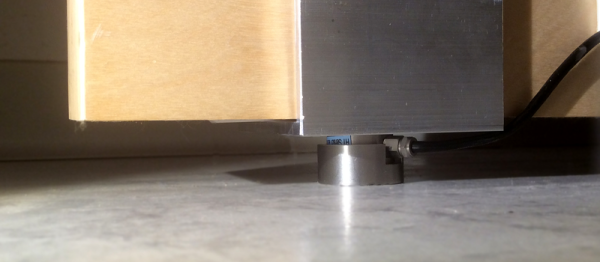Generally speaking, we don’t cover that many woodworking projects here at Hackaday. What’s the point? It’s bad enough that wood reminds us of the outside world, but it hardly ever blinks, and forget about connecting it to Wi-Fi. This doesn’t seem to bother you fine readers, so we have to assume most of you feel the same way. But while we might not always “get” large woodworking projects around these parts, we’re quite familiar with the obsession dedication required to work on a project for no other reason than to say you managed to pull it off.
 On that note, we present the latest creation of [Paul Jackman], a supersized replica of a Stanley utility knife made entirely out of wood. All wooden except for the blade anyway, which is cut from 1/8″ thick knife steel. That’s right, this gigantic utility knife is fully functional. Not that we would recommend opening too many boxes with it, as you’re likely to open up an artery if this monster slips.
On that note, we present the latest creation of [Paul Jackman], a supersized replica of a Stanley utility knife made entirely out of wood. All wooden except for the blade anyway, which is cut from 1/8″ thick knife steel. That’s right, this gigantic utility knife is fully functional. Not that we would recommend opening too many boxes with it, as you’re likely to open up an artery if this monster slips.
We can’t imagine there are going to be many others duplicating this project, but regardless [Paul] has done a phenomenal job documenting every step of the build on his site. From cutting the rough shape out on his bandsaw to doing all painstaking detail work, everything is clearly photographed and described. After the break there’s even a complete build video.
The most interesting part has to be all of the little internal mechanisms, each one carefully reproduced at perfect scale from different woods depending on the requirements of the component. For example [Paul] mentions he choose white oak for the spring due to its flexibility. Even the screw to hold the knife closed was made out of a block of wood on the lathe.
For whatever reason, people seem to enjoy building scaled up replicas of things. We’ve seen everything from LEGO pieces to gold bars get the jumbo treatment. We suppose it’s easier than the alternative: building very tiny versions of big things.
Continue reading “Every Shop Needs A Giant Wooden Utility Knife”



















